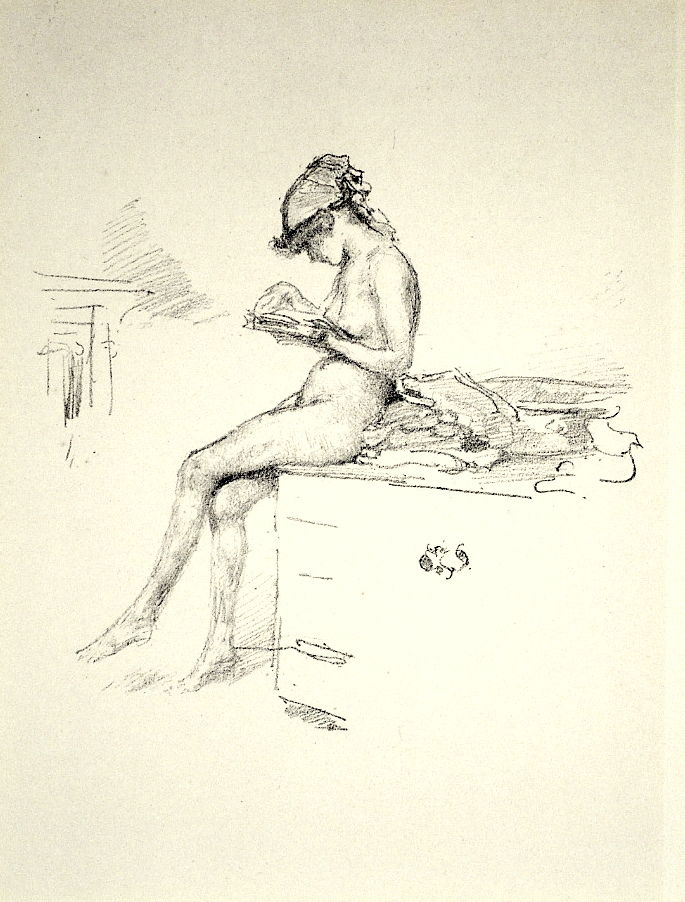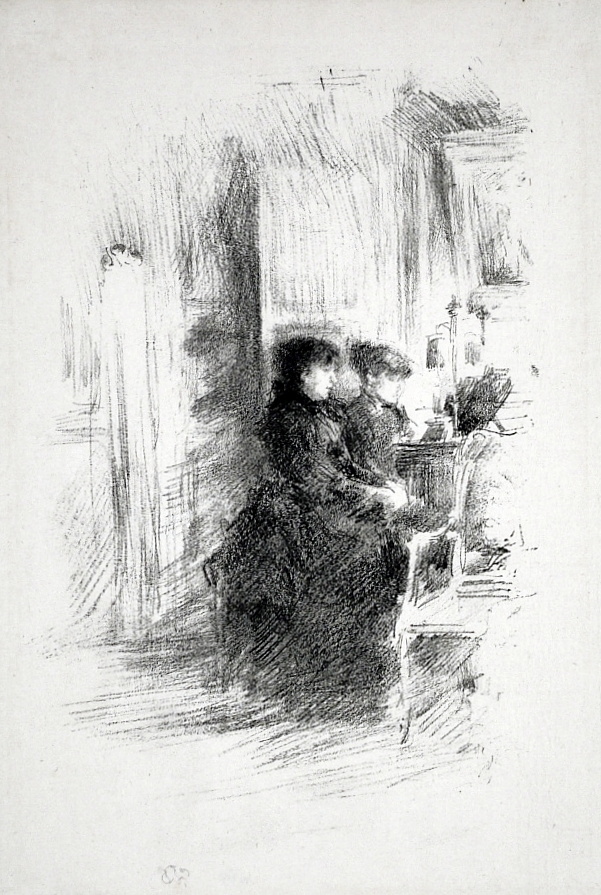The Little Nude Model, Reading
Friday, February 28th, 2014
James Whistler (1830-1903), The Little Nude Model, Reading, lithograph, 1889-90; [signed with the butterfly in the stone]. Reference: Spink 33, Way 29, only state. Printed by Goulding, January 1904, on a medium weight ivory laid paper with the watermark OWP & AOL, Spink watermark #219. In generally good condition (irregular mat staining outside of the image, a small paper loss left edge) on a large sheet, 10 1/4 x 7 3/4, the sheet 14 3/4 x 10 1/4 inches.
Provenance:
Colnaghi, London (with their stock number C4540 lower right recto)
Unidentified collector (circular stamp lower left verso, not found in Lugt)
Kennedy Gallery (with stock number A97479 verso)
Initials in pencil DK and HNO verso (not in Lugt, possible stock refererences)
A good impression of this popular image. Little Nude Model, Reading sold better than any other lithograph in Whistler’s 1895-6 exhibition at the Fine Art Society, and only one impression remained in his estate in 1903.
A total of 28 impressions of The Little Nude Model, Reading were made by Way, and just after Whistler’s death an edition of 55 were printed by Goulding.

